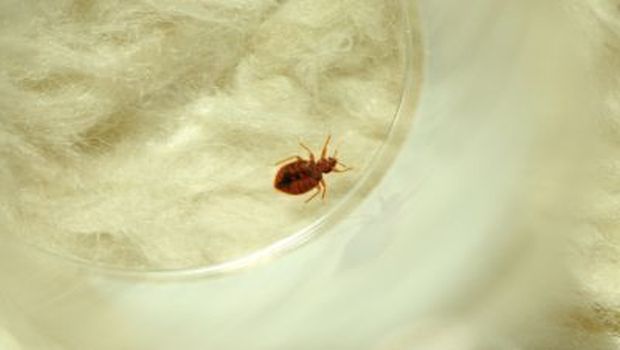Chicago Tops Bed Bug Cities List for Third Consecutive Year


Chicago tops the 2014 Bed Bug Cities List for the third year in a row. The list, released by pest control leader Orkin, ranks the cities by the number of bed bug treatments Orkin performed from January to December 2014. Bed bugs were in the news throughout 2014 in the Windy City, with reports of the blood-sucking insects on public transit and inside several downtown office buildings, as well as in police headquarters, a fire station, school, library and movie theater.
“Bed bugs are a serious issue across the country, and they’re very difficult to control,” says Orkin entomologist and technical services director Ron Harrison, PhD. “Bed bugs are not limited to any level of cleanliness or income, which means they can be found in any home or hotel. They’re great hitchhikers, and people often bring them inside on their clothes or in their luggage.”
Seven cities made double-digit jumps on Orkin’s Bed Bug Cities List compared to 2013, including Omaha, Neb. (+16), Lexington, Ky. (+16), Sacramento, Calif. (+14), Grand Rapids, Mich. (+13), Buffalo, N.Y. (+12), Charleston, W.Va. (+11) and Louisville, Ky. (+10). Several cities also dropped significantly in the past year, including Syracuse, N.Y., San Diego, Miami, Greenville, S.C. and Atlanta. Four cities made the Bed Bug Cities List for the first time including Myrtle Beach, S.C., St. Louis, Bowling Green, Ky. and Ft. Wayne, Ind.
Here are the rankings:
1. Chicago
2. Detroit (+2)
3. Columbus, Ohio
4. Los Angeles (-2)
5. Cleveland – Akron – Canton, Ohio (+1)
6. Dallas – Ft. Worth (+7)
7. Cincinnati (-2)
8. Denver (+1)
9. Richmond – Petersburg, Va. (+2)
10. Dayton, Ohio (-3)
11. Indianapolis (-1)
12. Houston (+4)
13. Seattle – Tacoma (+5)
14. Washington, District of Columbia – Hagerstown, Md. (-6)
15. Milwaukee (+6)
16. San Francisco – Oakland – San Jose (+3)
17. Raleigh – Durham – Fayetteville, N.C. (-5)
18. New York (-1)
19. Charleston – Huntington, W.Va. (+11)
20. Grand Rapids – Kalamazoo – Battle Creek, Mich. (+13)
21. Omaha, Neb. (+16)
22. Louisville, Ky. (+10)
23. Nashville, Tenn.
24. Lexington, Ky. (+16)
25. Atlanta (-10)
26. Buffalo, N.Y. (+12)
27. Sacramento – Stockton – Modesto, Calif. (+14)
28. Syracuse, N.Y. (-14)
29. Boston – Manchester (-9)
30. Charlotte, N.C. (-5)
31. Baltimore (-4)
32. Phoenix – Prescott (-4)
33. Miami – Ft. Lauderdale (-11)
34. Knoxville, Tenn. (-3)
35. Cedar Rapids – Waterloo – Dubuque, Iowa (-6)
36. Minneapolis – St. Paul (+8)
37. Hartford – New Haven, Conn. (+3)
38. Champaign – Springfield – Decatur, Ill. (-3)
39. San Diego (-13)
40. Lincoln – Hastings – Kearney, Neb. (-1)
41. Kansas City, Mo. (+9)
42. Honolulu (+3)
43. Albany – Schenectady – Troy, N.Y.
44. Colorado Springs – Pueblo, Colo. (-2)
45. Myrtle Beach – Florence, S.C.
46. St. Louis
47. Greenville – Spartanburg, S.C. – Asheville, N.C. (-11)
48. Bowling Green, Ky.
49. Ft. Wayne, Ind.
50. Toledo, Ohio (-4)
Bed bugs are in every region of the country, and Orkin has treated for bed bugs in all 50 states. Rollins saw an 18 percent increase in bed bug revenue in 2014. The problem is growing nationwide as well. According to an annual report on the pest control industry, Americans spent $446 million to get rid of bed bugs in 2013, the latest data available, compared to $70 million in 2004.
While the cities above topped Orkin’s list, homeowners, tenants and travelers across the country should take the following precautions to help prevent bed bugs:
At Home:
- Inspect your home for signs of bed bugs regularly. Check locations where bed bugs hide during the day, including in furniture, mattress seams and bed sheets, as well as behind baseboards, electrical outlets and picture frames.
- Decrease clutter around your home to make bed bug inspections and detection much easier.
- Inspect and quarantine all secondhand furniture before bringing it inside your home.
- Dry potentially infested bed linens, curtains and stuffed animals on the hottest temperature allowed for the fabric.
During travel, remember the acronym S.L.E.E.P. to inspect for bed bugs:
- Survey the hotel room for signs of an infestation. Look for red or brown spots on sheets.
- Lift and Look in bed bug hiding spots: the mattress, box spring, sheets and furniture, as well as behind baseboards, pictures and even torn wallpaper.
- Elevate luggage on a rack away from the bed and wall. The safest places are in the bathroom or on counters.
- Examine your luggage while repacking and once you return home from a trip.
- Place all dryer-safe clothing from your luggage in the dryer for at least 15 minutes at the highest setting when you return home.
Bed bugs are not known to spread human disease like many other pests, but can leave itchy, bloody welts on skin, and they are active year-round. Because every bed bug scenario is different, it’s important for homeowners to call a professional who can create a solution tailored to their home’s needs.
Source: Orkin, LLC
Vet IP Roundtable 2: Infection Control and Biosecurity Challenges in Veterinary Care
March 31st 2025Veterinary IPs highlight critical gaps in cleaning protocols, training, and biosecurity, stressing the urgent need for standardized, animal-specific infection prevention practices across diverse care settings.
Invisible, Indispensable: The Vital Role of AHRQ in Infection Prevention
March 25th 2025With health care systems under strain and infection preventionists being laid off nationwide, a little-known federal agency stands as a last line of defense against preventable patient harm. Yet the Agency for Healthcare Research and Quality (AHRQ) is now facing devastating cuts—threatening decades of progress in patient safety.
From Shortages to Security: How Reusable Health Care Textiles Can Transform Infection Prevention
March 7th 2025Reusable health care textiles enhance infection prevention, reduce waste, and strengthen supply chains. Hygienically clean textiles offer a sustainable, cost-effective alternative to disposable PPE, ensuring patient safety and environmental responsibility.